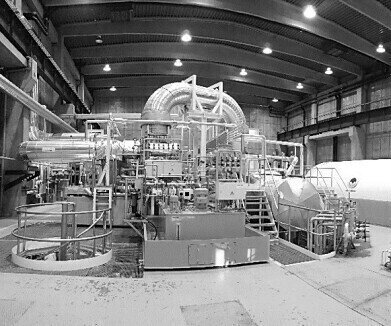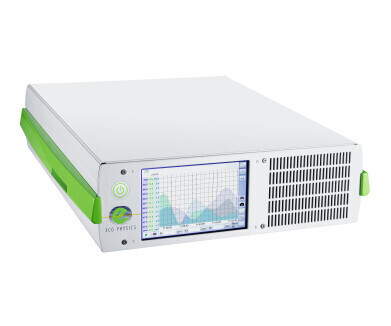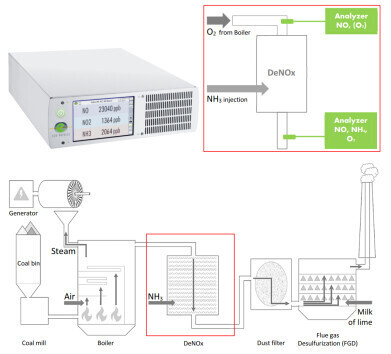Gas detection
Gas analysis (NO/NOX/NH3/O2) for flue gas denitrification (DeNOx) plants
Mar 12 2024
Whenever organic matter is burned, for example coal, fossil fuels, natural gases, as well as organic waste or biomass for energy production, the emission contains pollutants as a side product of this process. During the combustion, one of the most climate active gases is created in large amounts: nitrogen oxides (NOx). Therefore, all major stationary sources of nitrogen oxides emissions are obliged to install equipment to monitor and control due to government regulations.
NOx reduction: step one
In order to reduce the NOx formation during combustion, often low NOx burners are installed. Sometimes they are being combined with a reintegration of flue-gas and air-staging, in order to delay a fuel /air mixing and reestablish fuel rich zones for reburning. Often, NOx emissions can be reduced by 30%, but as a side effect, combustion is tending to be more incomplete. Meaning that more incomplete burned carbon increases the emissions of carbon monoxide.
NOx reduction: step two
NOx that has already been formed is reduced in a second treatment component, which is separately installed either closer to the pipe/exhaust, or integrated behind the primary component, the low NOx burner. In most flue gas treatment facilities, the treatment consists of an injection of ammonia (NH3), urea or related substances. Consequently, NOx is being reduced to N2. The second treatment component is either designated as selective catalytic reduction (SCR) or selective non catalytic reduction (SNCR).
selective catalytic reduction (scr)
The SCR process reduces combustive NOX to water and nitrogen (N2). Therefore, ammonia or urea is injected into the flue gas, before it reaches a catalyst, where the reduction effectively takes place. Depending on the contamination rate of the flue gas, the SCR is being operated at temperatures up to 400°C. The ammonia slip behind the SCR catalyst is in low ppm range.
selective non-catalytic reduction (sncr)
In the SNCR process, the introduction of ammonia or urea takes place in the combustive, hot zone of the flue gas. The reduction NOX occurs immediately, not in a separately designed compartment of the process. Depending on the type of catalytic reagent, the SNCR operates at temperatures between 800 to 1’100°C. The ammonia slip can be formed in higher levels, if the process is running below the optimal temperature.
ammonia slip
The ammonia slip in the flue gas processing results in the formation of ammonia salts, that can have negative impacts on the downstream piping and connected treatment compartments. The generated fly ash has to fulfill quality standards, before it can be sold and declared as waste. For the SCR plants, the ammonia slip concentration is located <2ppm, for SNCR <30ppm. During the SCR operation, the catalyst reagent is being consumed and the ammonia slip increases proportionally, therefore additional catalyst reagent needs to injected into the reactor or the existing one needs to be regenerated or refilled (whatever is possible and more cost effective). When the reactor of the SCR is running below the optimal temperature, ammonium bisulfate (ABS) can form a coating on the catalyst, reducing its conversion abilities severely.
denox plant control
The emissions need to fulfill the environmental standards and the flue gas specifications should not harm the downstream piping and equipment (precipitation, coating or clogging). Therefore, the DeNOx plant needs to be controlled effectively. In order to do so, NOX needs to be measured before and after the catalyst. Additionally, oxygen is monitored to determine, if there is any leakage. The amount of injected NH3 is identical to the detected NOX in the flue gas.
measurement ranges
before DeNOx NO: 500 – 2’000 mg/m3, O2: 0 – 10 / 20 Vol%
after DeNOx. NO: 100 – 500 mg/m3
O2: 0 – 10 / 20 Vol%
SRC NH3: 0 – 10 / 30 ppm
SNCR NH3: 0 – 50 / 100 ppm
our suggestion: the ncld 800 series
To ensure compliance with current and future regulations, which are continuously enhanced in combination with NOX tax savings, the use of certified ISO/EN 14792 and 15267-2 instrumentation is the key factor. Chemiluminescence is the standard reference method for determination of nitrogen oxides in stationary source emissions. Based upon the experience with the CLD 700 ELht, CLD 822Mh and CLD 822CMhr in the field of continuous emission monitoring, low NOX burner and SCR research, ECO PHYSICS developed the new nCLD 800 Series. The two-channel, chemiluminescence-based NOX analyzers detect NO, NO2 and NOX simultaneously at concentrations ranging from 5 to 5’000 ppm with minimal detection limits averaging from 0.05ppb to 0.5ppm. To ensure accordance with the sample conditions, the nCLD 800 Series is modularly designed to provide tailor-made solutions. For instance, a dual sample inlet, two parallel gas flow streams with heated sample lines, two reaction chambers with specialized metal converters, an internal pump and pressure regulation, are only a few possible adaptations.
Eco physics’s solution: nCLD EL2, nCLD 822CMhr nCLD EL MOX
The nCLD EL2 (QAL1 certified) with its heated sample inlet and internal pressure correction allows a specific control of the DeNOx module and the catalyst converter of the nCLD 822CMhr is a very valuable asset to determine the ammonia slip in SCR. Even the oxygen provided by the air inlet into the boiler, which optimizes the combustion process, can be monitored by an nCLD EL MOX, which, besides NO, NO2 and NOX, can also measure the O2 content up to 20% due to its paramagnetic sensor as add-on.
Other applicable industries for nCLD EL2, nCLD 822CMHR, nCLD EL MOX:
- Power plants
- Biomass power stations
- CHP (Combined Heat and Power)
- Waste incineration (municipal, sewage)
- Cement and concrete plants
- Nitric acid plants
Digital Edition
IET 35.2 March
April 2025
Air Monitoring - Probe Sampling in Hazardous Areas Under Extreme Conditions - New, Game-Changing Sensor for Methane Emissions - Blue Sky Thinking: a 50-year Retrospective on Technological Prog...
View all digital editions
Events
May 06 2025 Nuremberg, Germany
May 10 2025 Karachi, Pakistan
May 11 2025 Vienna, Austria
May 11 2025 Seoul, South Korea
Salon Analyse Industrielle & Instrumentation
May 14 2025 Paris, France











.jpg)


_(4427399123)-(2).jpg)









